During my early career as a therapist rehabilitating people after closed head injuries and stroke, I became fascinated by the workings of the brain. These years taught me a lot about the mechanisms responsible for our stress reactions, sound decision making and effective relating skills. They are insights I still value as a coach…
Leaders need to be able to think strategically. We expect them to make decisions based on sound reasoning. We also expect leaders to engage proactively. But too often this is not the case.
When we are triggered by a problem that is overwhelming, when someone challenges our identity or we encounter perceived threats, a part of the brain called the amygdala kicks in. Though it is not much larger than the size of a pea – the amygdala is the part of the brain responsible for our fight and flight response, it has the potential to save us from imminent harm and to send us into a panic. When we sense that we are in danger we can find ourselves at the mercy of what psychologists refer to as an amygdala hijack.
People typically behave defensively when they are caught in an amygdala hijack. Their actions are driven by self-preservation rather than organisational priorities or their deepest vision. Leadership decisions become reactive, rather than strategic. Our focus narrows and we overlook critical information.
When we add hierarchy and power to the mix, it gets even more complex. Direct reports learn to recognise the signs of an amygdala attack and often avoid their bosses when they are in these states. With the loss counter balancing perspectives that others might bring to the table crucial organisational intelligence is lost.
So what exactly is going on?
The prefrontal cortex is the part of the brain responsible for executive decision making. During an amygdala hijack, activity within this region is reduced. The information superhighways leading to the prefrontal cortex are jammed due to frenetic activity in the more primitive emotional brain. Our thinking typically goes round and round in circles, and we make little real progress.
That’s where coaching can make a difference.
Changing your physiology
Coaching helps people move from a state of reactivity to a more resourced mental state. This can be achieved in a number of ways. Mindfulness and breathing exercises can help a person to shift their physiological reactions to stress. When our out-breath is longer than our in-breath, we begin to activate the parasympathetic nervous system. We signal our body to enter a state of relaxation, countering the amygdala’s messages that we need to be on high alert. Over time you will learn techniques for regulating spikes in your stress hormones and bring yourself back to an even keel.
Choosing Powerful Questions
Coaches help clients to think clearly. The coach’s questions redirect attention away from habitual emotions to the search for new insights and perspectives. They prime neural circuits to look for novel information, rather than defaulting to over-used (and ineffective) thought patterns.
Well-crafted coaching questions shift a leader or employee’s attention (and brain activity) from their amygdala based reactions to the prefrontal cortex where reliable thought is possible. They act as signposts that help individuals escape a reactive mindset and begin to make better choices. This is particularly so in conflict management coaching, when emotions are usually running high.
Here are a few of my favourite coaching questions:
What outcomes are you hoping to achieve? What impact has this had on you?
How are you approaching this situation?
How does your approach fit with your desired outcome?
What do you know for sure and what are you surmising?
What options are available to you?
If you would like to learn more about managing conflict more effectively, or coaching individuals through conflict, take a look at our forthcoming CINERGY® Conflict Management Coach program.
